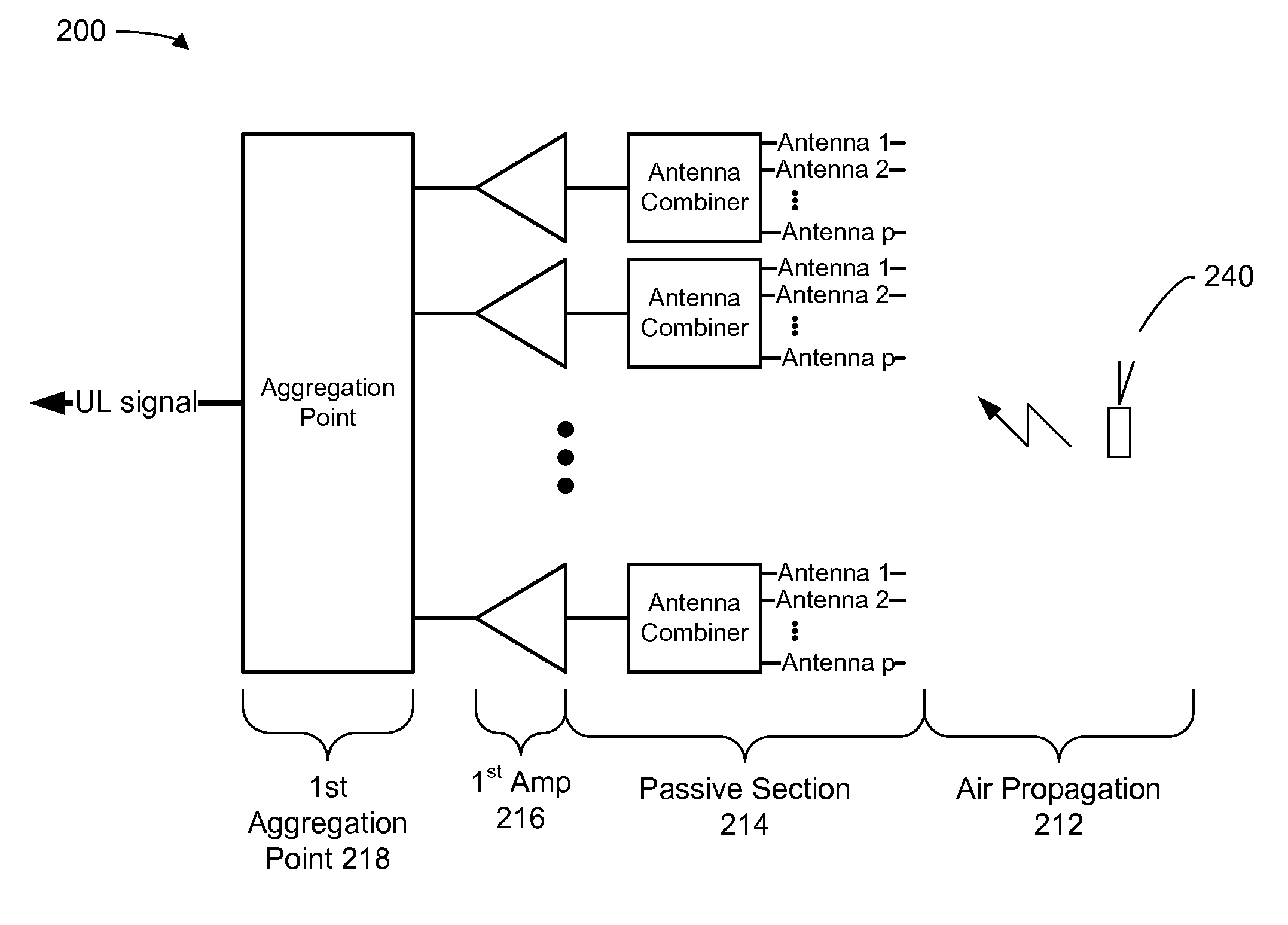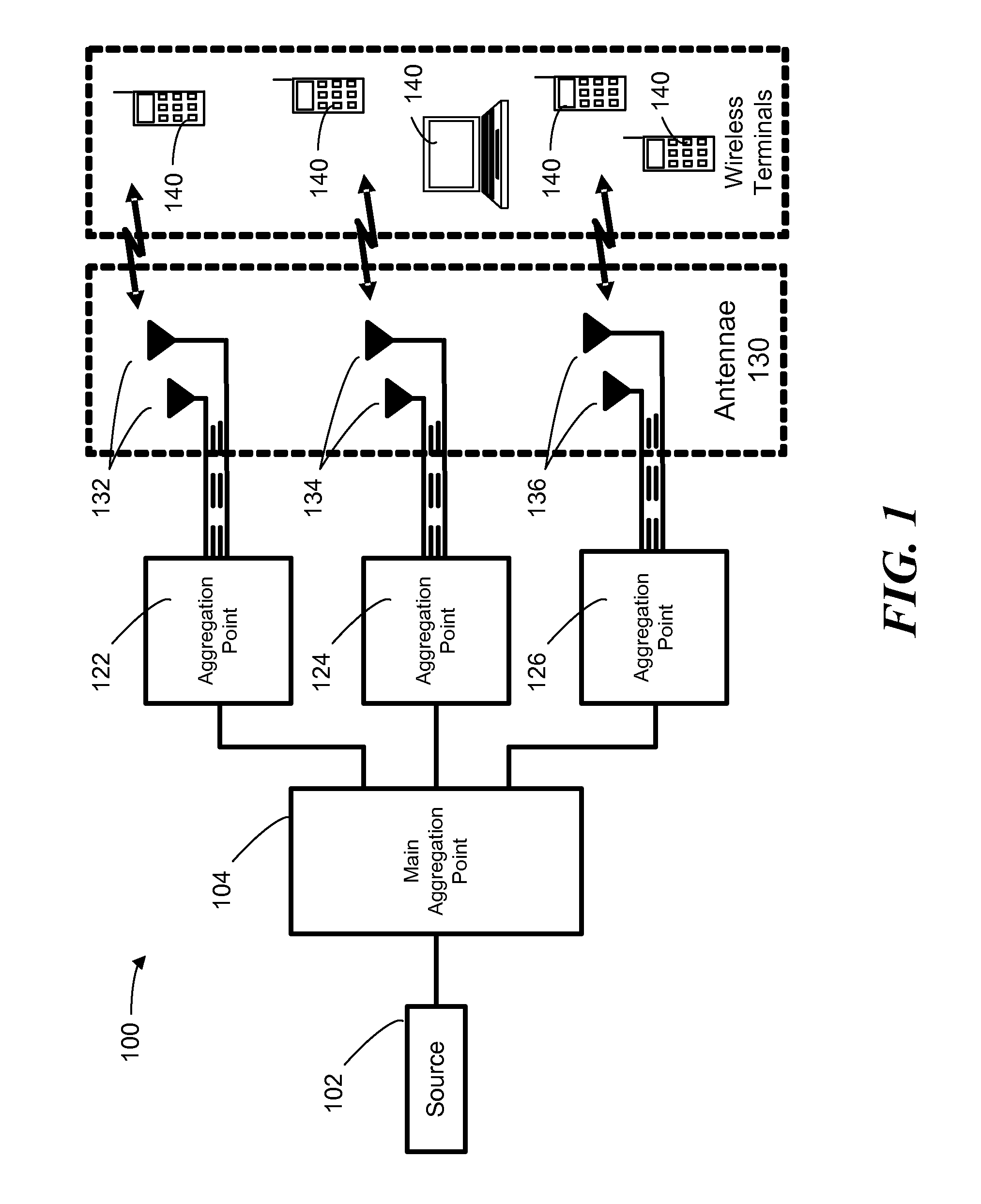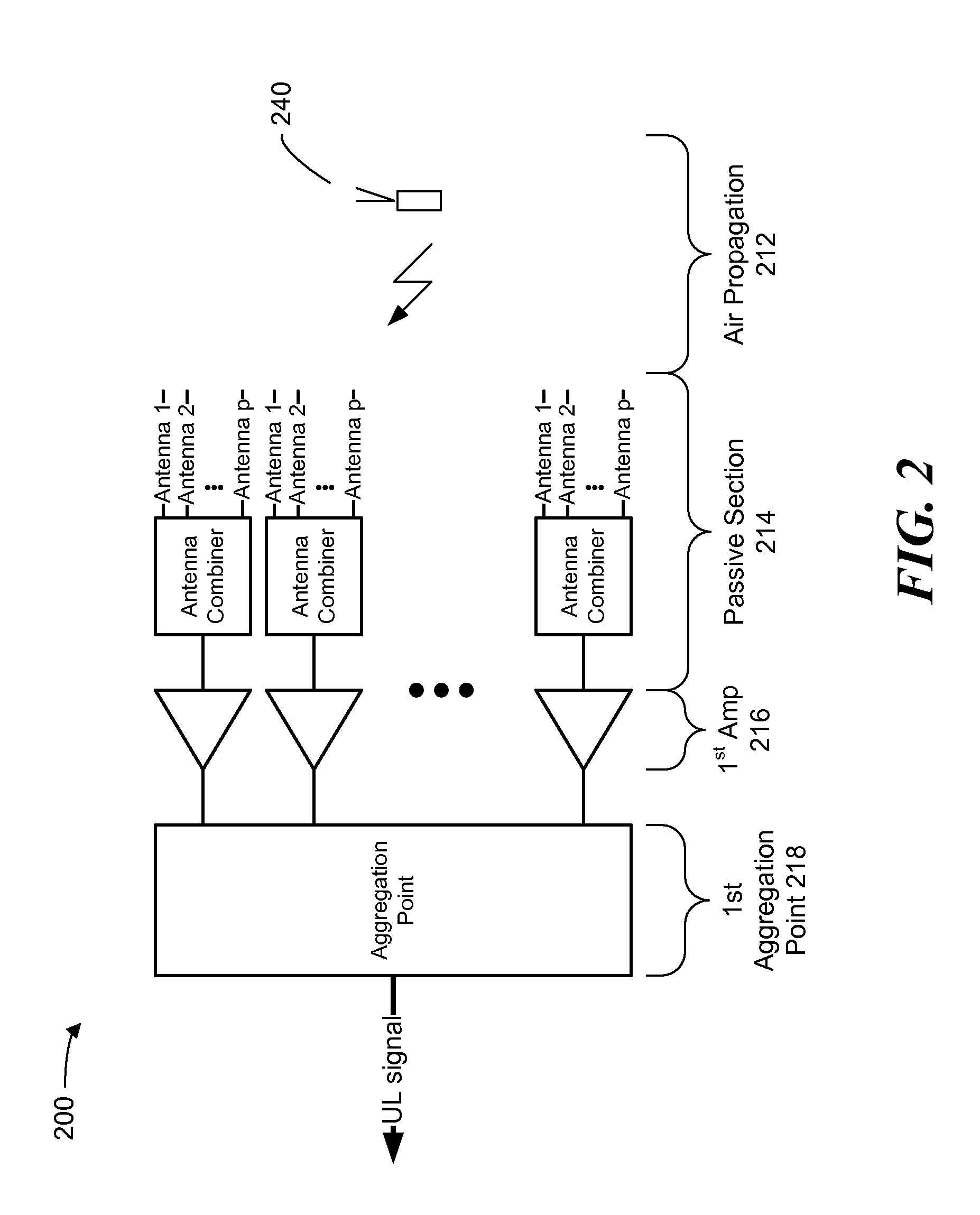Method and system for improving uplink performance
a technology of uplink and communication method, applied in diversity/multi-antenna system, site diversity, polarisation/directional diversity, etc., can solve the problems of reducing the snr of the uplink signal, increasing the noise level, etc., and achieving negative financial impact, reducing the distance between the antennas, and restricting the dynamic range
- Summary
- Abstract
- Description
- Claims
- Application Information
AI Technical Summary
Benefits of technology
Problems solved by technology
Method used
Image
Examples
Embodiment Construction
[0041]In accordance with the invention, two methods and systems for improving the Uplink Performance of a DAS are disclosed. Both methods allow for dynamic range “smoothing”, and thus further contribute to improving the uplink performance.
[0042]The Aggregation Point Noise Blocking (APNB) method and system minimizes noise accumulation in aggregation points of the DAS.
[0043]The Signal Regeneration method and system, includes regeneration of the signal along the uplink path of the DAS is order to improve the signal SNR to the values typical to a signal from a nearby transmitter.
Aggregation Point Noise Blocking
[0044]As explained above, at the aggregation points in the DAS, the noise from the various branches being aggregated is combined, thereby increasing the noise level, while the signal from a specific terminal, which typically would be present only on a single branch, does not increase accordingly. The result is a decrease in SNR which is proportional to the number of branches being...
PUM
 Login to View More
Login to View More Abstract
Description
Claims
Application Information
 Login to View More
Login to View More - R&D
- Intellectual Property
- Life Sciences
- Materials
- Tech Scout
- Unparalleled Data Quality
- Higher Quality Content
- 60% Fewer Hallucinations
Browse by: Latest US Patents, China's latest patents, Technical Efficacy Thesaurus, Application Domain, Technology Topic, Popular Technical Reports.
© 2025 PatSnap. All rights reserved.Legal|Privacy policy|Modern Slavery Act Transparency Statement|Sitemap|About US| Contact US: help@patsnap.com



